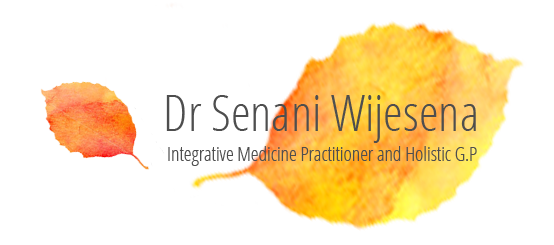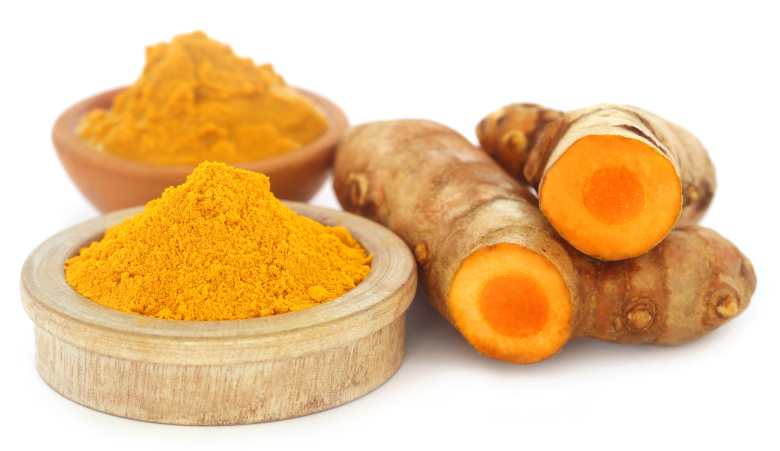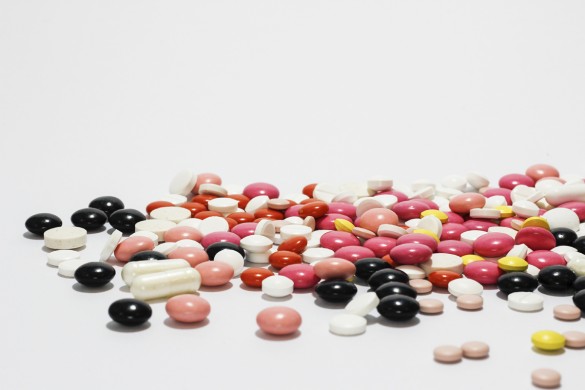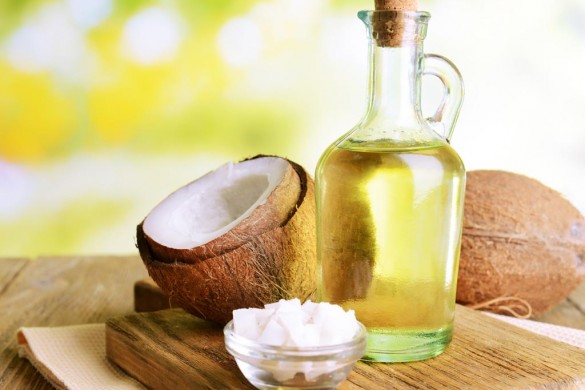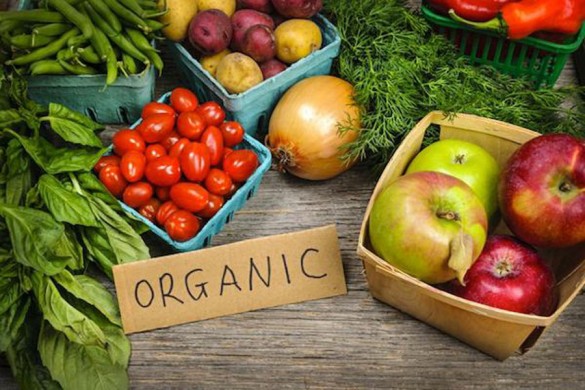Written by Dr Senani Wijesena 11/03/2017
Introduction
Accumulating evidence supports the association of chronic diseases to modern lifestyle: stress, lack of exercise, abuse of tobacco and alcohol and to the transition from natural unprocessed foods to processed, calorie dense and heat treated foods. There is a strong association between chronic diseases and reduced intake of plant fibres, plant antioxidants, omega 3 fats and increased consumption of industrially produced and processed dairy produce, trans fats and omega 6 fats, refined sugars and starch products (grains). The change in diet from traditional unrefined foods to the modern diet has led to an increase in inflammation in tissues which is now known to be an underlying factor in the pathogenesis of chronic western diseases such as type 2 diabetes mellitus, cardiovascular disease, neurodegenerative disease (Alzheimer’s), arthritis, cancer.
Antioxidants are substances that inhibit oxidation and free radical damage of tissues created by inflammation and can be vitamins and plant extracts. Curcumin is the main natural plant antioxidant found in the stem of Turmeric (Curcuma longa) and gives the spice its yellow colour. Native to tropical South Asia, India produces nearly all of the world’s turmeric crop and consumes 80% of it. This plant has been traditionally used in Asian countries for thousands of years as a medical herb (Ayurvedic medicine) and is now used for several conditions due to its antioxidant, anti-inflammatory, anticancer and antimicrobial properties. In the last 50 years it has been proven that most of the effects of turmeric are mainly due to curcumin, with studies indicating potential effects against diabetes, inflammatory bowel disease, allergies, arthritis, Alzheimer’s disease, aging and other chronic illnesses. Promising effects have also been observed in patients with various pro-inflammatory diseases including cancer, cardiovascular disease, uveitis (eye inflammation), irritable bowel disease, tropical pancreatitis, gastric and duodenal ulcer, oral lichen planus (skin condition), gastric inflammation, vitiligo (autoimmune depigmented skin condition), psoriasis, acute coronary syndrome, atherosclerosis (hardened/narrow arteries), diabetes (and its complications), kidney conditions, acquired immunodeficiency syndrome (AIDS), β-thalassemia, gallbladder disease (biliary dyskinesia, cholecystitis) and chronic bacterial prostatitis (prostate infection). Curcumin has also shown protection against liver conditions, chronic arsenic exposure, and alcohol intoxication.
How does it work?
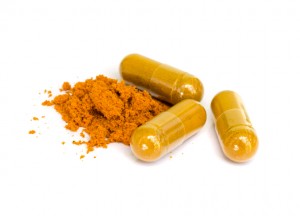 Curcumin is an antioxidant and inhibitor of synthesis of inflammatory chemicals and inhibits enyzmes/genes involved in the inflammatory cascade. Curcumin, in particular inhibits NF-kB (Nuclear factor kappa B) which subsequently leads to inhibition of the inflammatory cascade enzymes COX-2, LOX and iNOS (inducible nitric oxide synthase) leading to decreased synthesis of immune chemicals, tumor necrosis alpha (TNF-alpha), interleukins (IL-1,2, 6, 8 ,12) and anti-apoptotic proteins (tumor cell related). Nuclear factor kappa B plays a critical role in several signal transduction pathways involved in chronic inflammatory diseases such as asthma and arthritis and various cancers. Decreased synthesis of NF-KB by curcumin therefore has potential to improve inflammation in a multitude of chronic and acute inflammatory conditions.
Curcumin is an antioxidant and inhibitor of synthesis of inflammatory chemicals and inhibits enyzmes/genes involved in the inflammatory cascade. Curcumin, in particular inhibits NF-kB (Nuclear factor kappa B) which subsequently leads to inhibition of the inflammatory cascade enzymes COX-2, LOX and iNOS (inducible nitric oxide synthase) leading to decreased synthesis of immune chemicals, tumor necrosis alpha (TNF-alpha), interleukins (IL-1,2, 6, 8 ,12) and anti-apoptotic proteins (tumor cell related). Nuclear factor kappa B plays a critical role in several signal transduction pathways involved in chronic inflammatory diseases such as asthma and arthritis and various cancers. Decreased synthesis of NF-KB by curcumin therefore has potential to improve inflammation in a multitude of chronic and acute inflammatory conditions.
Curcumin also has the ability to intercept and neutralize potent pro-oxidants (free radicals) and carcinogens (cancer causing substances), both reactive oxygen species such as superoxide, peroxyl, hydroxyl radicals and NOS (nitric oxide, peroxynitrite). Curcumin has also been shown in studies to enhance the activity of many anti-oxidant enzymes such as catalase, superoxide dismutase, glutathione peroxidase and heme oxygenase. In addition, curcumin is able to increase the activity of detoxifying enzymes both in the liver and kidneys, protecting against carcinogenesis (cancer) processes.
Curcumin can also decrease fibrous tissue formation (scarring) as it is a potent inhibitor of tissue growth factor beta (TGF-b) and this is one of the reasons it can be expected to have positive effects in diseases such as kidney fibrosis, lung fibrosis, liver cirrhosis and inflammatory bowel disease (Crohn’s disease). Curcumin is found to be effective in auto immune diseases that are TH-1 mediated such as type 1 diabetes, multiple sclerosis, hashimoto’s thyroiditis, grave’s disease, crohn’s disease, psoriasis, sjogren’s disease (dry mouth/eyes), celiac disease, lichen planus, rheumatoid arthritis and chronic viral infections as it effectively inhibits the release of an immune chemical called IL-12 from T helper white cells that are otherwise involved in these diseases.
Curcumin and specific diseases
Asthma
It has been reported in the past that 11-40% of asthmatic patients in Asian countries such as India use herbal medicines. Traditional western medicine is less than currently optimal in treating asthma and has major limitations due to low efficacy, associated adverse effects, lack of disease modifying property and compliance issues. Therefore, there is a need to explore for new anti-asthmatic agents with extended pulmonary (lung) efficacy and minimal systemic side effects.
Allergy is a pro-inflammatory disease mediated by immune system chemicals called cytokines, which underlies the pathology of conditions such as asthma, hayfever and eczema. There are many studies, which show that curcumin can decrease inflammation in many respiratory diseases including asthma as it inhibits the NF-KB pathway and acts as a scavenger of nitric oxide and prevents bronchial (airway) inflammation in asthmatic patients. In a study by Kohil K et al, for example, curcumin in a dose of 200mg/kg body weight prevented allergic airway inflammation by inhibiting the action of NF-kB.
Inflammation of joints
Curcumin as an anti-inflammatory and anti-oxidant compound possess anti-rheumatic and anti-arthritic properties. Reactive oxygen species (ROS-free radicals) play a crucial role in joint destruction in rheumatoid arthritis. These free radicals can activate many inflammatory chemicals and growth factors as previously discussed leading to inflammation in the joints and fibrous tissue adhesions.
Turmeric extract has been shown in studies to prevent local joint activation of NF-kB and the subsequent expression of NF-kB regulated genes mediating joint inflammation and destruction as well as inhibiting inflammatory cell influx, joint levels of PGE2 (prostaglandins/inflammatory chemicals), and peri-articular osteoclast formation (bone destructing cells around joints) in animal studies. Studies used doses of curcumin of 4-12 gm daily for rheumatoid arthritis.
Curcumin and cancer
Curcumin, either alone or in combination with other agents, has demonstrated potential against colorectal cancer, pancreatic cancer, gastric (stomach) cancer, breast cancer, prostate cancer, gall bladder cancer, multiple myeloma, lung cancer, oral cancer and head and neck squamous cell cancer. Animal studies have demonstrated inhibition at all three stages of carcinogenesis – initiation, promotion and progression. Curcumin has demonstrated potential against colorectal (bowel) cancer in numerous clinical trials with doses up to 3.6gm/day showing effects on inflammatory/pro-carcinogenic mediators such as PGE2. Other studies which evaluated the combination of curcumin with quercetin (another antioxidant), in patients with familial adenomatous polyposis (a genetic condition of multiple colon polyps that strongly predisposes these individuals to colorectal cancer) showed a decrease in the number and size of the polyps after 6 months of treatment.
Curcumin has been found to be cytotoxic (causing cell death/apoptosis) to a variety of tumor cells. The action of curcumin depends on the cell type, the curcumin concentration, and the length of treatment. In addition to its role as a chemopreventive (preventing cancer) and chemotherapeutic agent (treating cancer), curcumin has been shown to have the potential to help eliminate chemoresistant cells by sensitizing tumors to chemotherapy, in part by inhibiting pathways that lead to treatment resistance. For example, adding curcumin to either chemotherapy agents 5-fluorouracil alone or 5-fluorourcil + oxaliplatin resulted in statistically significant growth inhibition and an enhancement in apoptosis in colon cancer cells. In addition to its role as a potentially potent chemosensitizer, curcumin is also a promising radiosensitizer in a wide variety of cancer cells.
The anticancer effects of curcumin mainly result from multiple biochemical mechanisms that are involved in the regulation of programmed cell death (apoptosis) and survival signals. The curcumin targets that are involved in signaling pathways include transcription factors, growth factors, inflammatory cytokines, receptors and enzymes. In different types of cancers curcumin exhibits anticancer actions through a combination of different mechanisms including survival signal reduction, pro-apoptotic promotion, anti-inflammatory actions and ROS (free radical) scavenging to different degrees. These functions involve the effect of curcumin’s inhibition of NF-KB, and other inflammatory chemicals, the effect of curcumin on the immune system and modulation of enzymes involved in cancer growth and formation.
In human studies, it has been shown that oral curcumin is well tolerated and has biological activity (causing regression) in some patients with pancreatic cancer. Best responses occur at 8gm per day, however, tolerability may be lower at this higher dose with abdominal pain/fullness leading to discontinuation.
Curcumin and Inflammatory bowel disease
Crohn’s disease (CD) and ulcerative colitis (UC) are the two primary forms of inflammatory bowel disease (IBD). The main difference between the two is nature and location of inflammatory changes in the gastrointestinal tract. CD can affect any part of the gastrointestinal tract and affects the entire bowel wall. In contrast, UC is restricted to the colon and the rectum and disease is confined to the intestinal epithelium (lining). Although very different in scope, both diseases may present with abdominal pain, vomiting, diarrhea, bloody stools, weight loss, and secondary sequelae such as arthritis, pyoderma gangrenosum (skin ulcers), and primary sclerosing cholangitis (chronic liver/bile duct disease).
Several studies have shown effectiveness of curcumin at doses varying between 1gm-2gm per day taken over a minimum of a month with and without standard medical treatment in reducing inflammation in both Crohn’s disease and Ulcerative colitis patients. Studies have noted a decrease in blood indices indicative of inflammation such as ESR, CRP as well as improved symptoms score and maintenance of remission.
Curcumin and peptic ulcer
Several international randomised control trials have shown symptomatic improvement and healing/reduction of gastric and duodenal ulcers in subjects taking between 1gm-3gm per day of curcumin over a minimum of 4 weeks and after 12 weeks ulcers were absent in most patients. The effect of curcumin on eradicating the infection Helicobacter Pylori, which causes peptic ulcers has been studied and has not proven to be effective so far.
Curcumin and infections
Curcumin has been found since early studies (1949) to be active against strains of the following micro-organisms; Staphylococcus aureus (skin bacteria), Salmonella paratyphi, Trichophyton gypseum (fungal organism), and Mycobacterium tuberculosis. In vitro studies have also shown that curcumin possesses anti-parasitic and anti malarial properties. In a recent study of 14 Candida strains, curcumin displayed anti-fungal properties against all tested strains. In another study, curcumin was shown to improve the activity of common azole and polyene anti-fungals. In some cell culture systems, curcumin has been shown to possess anti-viral activities. Other common activities of curcumin as demonstrated in in vitro cell culture models are wound healing in skin fibroblasts, anti-nociceptive activity (reduces pain associated with damage to ganglion neurons), anti-parasitic activity against African trypanosomes, schistosomicidal activity against Schistosoma mansoni adult flat worms and nematocidal activity (kills worms).
Studies have also shown that curcumin in conjunction with lactoferrin (an immune protein) administered at doses of 1gm (900mg Lactoferrin with 100mg curcumin) every 8 hrs for 4 weeks resulted in a reduction in recurrent respiratory infections in children and beneficial immune modulatory effects.
Curcumin and Diabetes
Diabetes mellitus (DM) is a chronic metabolic disease in which a person has high concentrations of blood sugar. The high blood sugar in turn produces symptoms of polyuria (increased urine volume output), polydipsia (increased thirst), and polyphagia (increased appetite). Three main types of diabetes are type 1, type 2, and gestational (pregnancy related) diabetes. Type 1 result from the body’s failure to produce insulin, whereas in type 2 diabetes (T2DM) the body fails to use insulin properly and there is insulin resistance. Extensive research over the past several years has indicated that pro-inflammatory cytokines and oxidative stress play a role in the pathogenesis of T2DM. Because of its anti-inflammatory property, curcumin represents a promising therapeutic option for T2DM. Curcumin’s ability to decrease blood sugar levels in human patients was first reported in 1972. The blood glucose lowering effect has been noted to occur with and without insulin and occurs at doses of 5gm curcumin per day with effects seen within a short period (weeks). This effect has been noted to reverse on cessation of intake of curcumin.
Curcumin has shown an anti-hyperglycemic effect as well as improved insulin sensitivity in many studies; these actions were attributed in part to its anti-inflammatory properties and anti-lipolytic effects (prevents fat breakdown). Curcumin treatment significantly improved endothelial (blood vessel lining cell) function and reduced oxidative stress and inflammatory markers (IL-6, TNF, endothelin-1) in diabetic patients in recent human studies as well.
Recently in a randomized, double blind, placebo controlled clinical trial assessing the efficacy of curcumin in delaying the development of T2DM in the pre-diabetes population, after 9 months of treatment with curcumin (1.5gm per day), no patients in the treatment group were diagnosed with T2DM whereas 16.4% of participants in the placebo group were. In addition, the participants in the curcumin treated group showed a better overall function of the insulin secreting pancreatic B cells (higher HOMA-b and lower C-peptide levels).
Obesity is a major risk factor for the development of T2DM, and curcumin’s potential to prevent obesity was investigated in a mouse model. Supplementing the high-fat diet of mice with curcumin did not affect food intake, but it did reduce body weight gain, adiposity (body fat), and micro-vessel density in adipose (fat) tissue, which coincided with reduced expression of vascular endothelial growth factor (affects blood vessel formation) and its receptor-2, peroxisome proliferator-activated receptor-γ (affects carbohydrate/fat and protein metabolism), and CCAAT/enhancer-binding protein-α (affects genes involved in nutrient metabolism). These findings suggest that dietary curcumin may have the potential to prevent obesity. The role of curcumin in improving body weight was evident from a recent study of patients with colorectal cancer. Curcumin administration (360 mg/day for 10–30 days) in these patients significantly improved body weight; the effect of curcumin was associated with a significant decrease in serum tumor necrosis factor-α levels, which is otherwise raised in individuals with obesity.
Curcumin and cardiovascular disease
Atherosclerosis is a condition in which fatty materials such as cholesterol that has been oxidized accumulate and thickens the artery wall. This is a chronic disease that normally remains asymptomatic (no symptoms) for decades. One study evaluated the effects of curcumin in reducing the serum levels of cholesterol and lipid peroxides (oxidized fats) in ten healthy human volunteers. Curcumin (at 0.5 g/day) administered to the volunteers for 7 days reduced serum lipid peroxides by 33% and total serum cholesterol levels by 11.63%, and increased HDL (good) cholesterol by 29%. Because of these properties, curcumin was suggested to act as a chemopreventive agent against atherosclerosis.
The antioxidant activity of curcumin could be attributed to the phenolic and methoxy groups in conjunction with the 1,3-diketone-conjugated diene system, for scavenging of the oxygen radicals. In addition, curcumin is shown to enhance the activities of detoxifying enzymes such as glutathione-S-transferase in vivo. It has also been shown that oxygen free radicals exacerbate cardiac damage and curcumin induces cardio-protective effect and it also inhibits free-radical generation in myocardial ischemia in rats. Many studies have shown that the anti-thrombotic (reduced clot), anti-proliferative, and anti-inflammatory effects of curcumin and the effect of curcumin in decreasing the serum cholesterol level may protect against the pathological changes occurring with atherosclerosis.
According to researches, suggested mechanisms of cholesterol reduction by curcumin include; inhibition of intestinal absorption, up-regulation of the LDL receptor and cholesterol 7a-hydroxylase enzyme, conversion of cholesterol into bile acids and fecal excretion of bile acids and cholesterol.
Curcumin and eye health
Curcumin has also been shown to have potential against abnormal eye conditions, most importantly uveitis (inflammation of the uvea), which is characterized by symptoms such as red eye, infected conjunctiva, pain, and decreased vision. In a clinical trial from Italy, curcumin was administered orally (600 mg, twice a day) for 12–18 months to 106 patients with uveitis. Curcumin was well tolerated and reduced eye discomfort in more than 80% of patients after a few weeks of treatment.
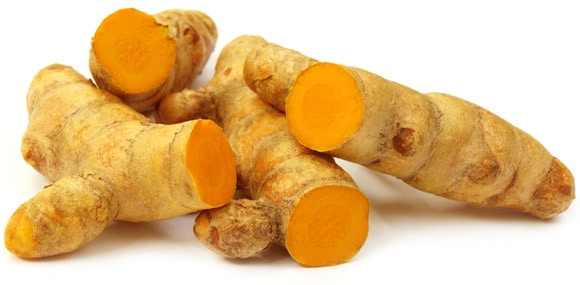
Curcumin and neurological disorders
Curcumin has been shown to affect various neurological disorders, including Alzheimer’s disease and Parkinson’s disease. Alzheimer’s disease is a progressive neurodegenerative disorder, usually affecting people older than age 65 years. The pathogenesis of Alzheimer’s disease involves aggregation of a protein called Amyloid β into fibrils, formation of amyloid plaques, and deposition of these plaques into the brain. These plaques are believed to cause the loss of cholinergic neurons (nerve cells) in a part of the brain called the basal forebrain of patients with Alzheimer’s disease. Free radical damage and oxidative damage as well as low antioxidant levels are associated with nerve degeneration in individuals with Alzheimer’s disease and dementia. The currently available treatments for this disease have numerous adverse effects, thus underscoring the need for alternative approaches.
In several animal studies, curcumin treatment has been shown to reduce plaque formation and amyloid beta accumulation in a mouse model of Alzheimer’s disease. Human trials are currently underway evaluating the effect of curcumin at doses between 2-4gm per day on biomarkers associated with the pathology of the disease, after a recent small study indicated that curcumin administration was associated with an increase in the level of vitamin E (which has antioxidant activity) and curcumin did not cause any adverse effects in participants with Alzheimer’s disease. This small study did not result in an improvement of the Mini-Mental State Examination (MMSE) score after curcumin treatment (a score that assesses mental status) nor biomarkers. The authors however concluded that the anti-oxidant activity of curcuminoids might decrease the need for anti-oxidant Vitamin E and may protect against free radical damage and further neuro-degeneration.
One of the pathological hallmarks of another prominent neurological disorder, Parkinson’s disease, is the presence of protein deposits inside nerve cells called Lewy bodies and alteration of neurotransmitter levels such as dopamine which control movement and mood. Rats pretreated with curcumin showed a clear protection in dopamine levels in the striata of rat brain. Curcumin’s ability to exhibit neuro-protection against 6-hydroxydopamine was related to its anti-oxidant capability and ability to penetrate into the brain. Curcumin was shown to substantially improve behavioral deficits and enhance neuron survival in the substantia nigra part of the brain in the Parkinson’s disease mouse model.
Epilepsy is another chronic neurological disorder in which curcumin has shown promise with less severe seizures and less cognitive impairment compared to subjects that weren’t pre-treated according to animal studies. Other neurological disorders in which curcumin has shown promise in animal models are diabetic encephalopathy, encephalomyelitis, intra-cerebral hemorrhage, spinal cord injury, cerebral malaria, convulsions, and brain ischemia.
Curcumin and psoriasis
Psoriasis is a chronic inflammatory skin disease characterized by thick, red, scaly lesions that may appear on any part of the body and affects approximately 2% of the population worldwide and is associated with increased cardiovascular disease risk. The currently available treatment for psoriasis is time consuming (UVB light treatment or psoralen plus UVA therapy) and has the potential for organ toxicity (drugs-methotrexate, acitretin, cyclosporine). Elevation of activity of a protein kinase enzyme called PhK has been correlated with pathogenesis of psoriasis. Therefore, agents with potential to inhibit PhK activity can be useful for the treatment of psoriasis. Curcumin is an inhibitor of PhK and has been seen in studies to have better effects in reducing activity of this enzyme than traditional treatments. A decrease in PhK activity in curcumin treated psoriasis is associated with a decrease in keratinocyte (skin cell) receptor expression and with a decrease in the severity of scaling (para-keratosis) and the density of skin immune cells/inflammation (epidermal CD8+ T cells).
Curcumin dosage and safety
Turmeric contains 2-6% curcumin by weight. Curcumin, once orally taken, is poorly absorbed and then is rapidly metabolized by the liver and eliminated and only a small amount is bioavailable to the rest of the tissues. This has been shown to limit its therapeutic efficacy. In humans receiving a dose of 2gm of curcumin alone, serum levels of curcumin were either undetectable or very low. The use of adjuvants such as piperine (a constituent of black pepper/long pepper) that can block the metabolic pathway of curcumin is often administered to increase its bioavailability and can increase it by 2000%, according to studies. Other promising approaches to increase the bioavailability of curcumin in humans include the use of nanoparticles, liposomes and phospholipid complexes.
The safety, tolerability and non-toxicity of curcumin at high doses (up to 8-12gm/day) are well established by human clinical trials. The USDA and FDA have approved curcumin as being GRAS (generally recognized as safe) and the polyphenol is now being used as a supplement in several countries.
Some sensitive people may experience diarrhea, yellow stool, rash and headache at various levels of curcumin intake and these effects should be observed and monitored, however.
References
- Wongcharoen W1, Phrommintikul A. The protective role of curcumin in cardiovascular diseases. Adv Exp Med Biol.2007; 595:359-77
- Miriyala S1, Panchatcharam M, Rengarajulu P Cardioprotective effects of curcumin. Int J Cardiol.2009 Apr 3;133(2):145-51. Epub 2009 Feb 23.
- Parastoo Mirzabeigi,a Amir Hooshang Mohammadpour,b Mojtaba Salarifar,c Kheirollah Gholami,a Mojtaba Mojtahedzadeh,a and Mohammad Reza Javadia, The Effect of Curcumin on some of Traditional and Non-traditional Cardiovascular Risk Factors: A Pilot Randomized, Double-blind, Placebo-controlled Trial Iran J Pharm Res. 2015 Spring; 14(2): 479–486.
- Wungi Park, Dong M. Shin et al. New perspectives of curcumin in cancer prevention. Cancer Prev Res 2013 May; 6(5): 387-400
- Gupta et al. Therapeutic roles of Curcumin: Lessons learned from clinical trials. The AAPS Journal Vol 15, No 1 Januray 2013, 195-218
- Bengmark, Mesa, Gil. Plant derived health-the effects of turmeric and curcuminoids. Nutr Hosp. 2009; 24 (3): 273-281
- Mario Pulido-Moran et al. Curcumin and Health. Molecules 2016, 21, 264.
- Sahdeo Prasad and Bharat Aggarawal. Turmeric, the Golden Spice. From Traditional medicine to Modern Medicine.
